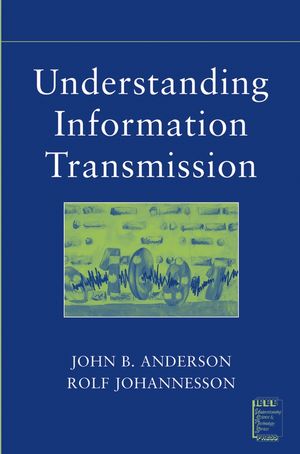Understanding Information TransmissionISBN: 978-0-471-67910-3
Paperback
320 pages
March 2005, Wiley-IEEE Press
 This is a Print-on-Demand title. It will be printed specifically to fill your order. Please allow an additional 10-15 days delivery time. The book is not returnable.
|
||||||
Preface vii
1. Introduction: First Ideas and Some History 1
1.1 What is communication? 2
1.2 Why digital communication? 6
1.3 Some history 8
1.4 A few remarks on intellectual history 27
1.5 Conclusions 28
References 29
2. Mathematical Methods of Information Transmission: Why Sinusoids? 30
2.1 Linear, time-invariant (LTI) systems 31
2.2 On the importance of being sinusoidal 43
2.3 The Fourier transform 48
2.4 What is bandwidth? 58
2.5 Discrete-time systems 66
2.6 Conclusions 69
References 70
Problems 70
3. Information Sources: What is Out There to be Sent? 77
3.1 What is text? 78
3.2 What is speech? 81
3.3 What is music? 88
3.4 What is an image? 94
3.5 What is video? 98
3.6 Conclusion 102
References 102
Problems 103
4. Transmission Methods: How is Information Sent? 105
4.1 Communication channels 105
4.2 Analog modulation 117
4.3 Digital modulation 127
4.4 FM stereo, television and a little about electronics 139
4.5 Conclusions 146
References 147
Problems 147
5. Information Theory and Coding: What did Shannon Promise? 150
5.1 Information theory—a primer 152
5.2 Methods of source coding 179
5.3 Methods of channel coding 189
5.4 Trellis coded modulation 199
5.5 Conclusions 205
References 206
Problems 207
6. Cryptology: FUBSWRORJB?? 211
6.1 Fundamentals of cryptosystems 211
6.2 Caesar and Vigenere ciphers 215
6.3 The Vernam cipher and perfect secrecy 219
6.4 Stream ciphers 220
6.5 Block ciphers 223
6.6 Cryptomachines during World War II 224
6.7 Two-key cryptography 228
6.8 Conclusions 239
References 239
Problems 239
7. Communication Networks: Let's Get Connected 241
7.1 An overview of information networks 241
7.2 Circuit switching: The telephone net 252
7.3 Mobile telephony 260
7.4 The Internet 265
References 275
Appendix A: Complex Numbers 276
Appendix B: Sinusoids and Circuit Theory 281
Appendix C: Probability Theory: A Primer 297
Index 306
About the Authors



